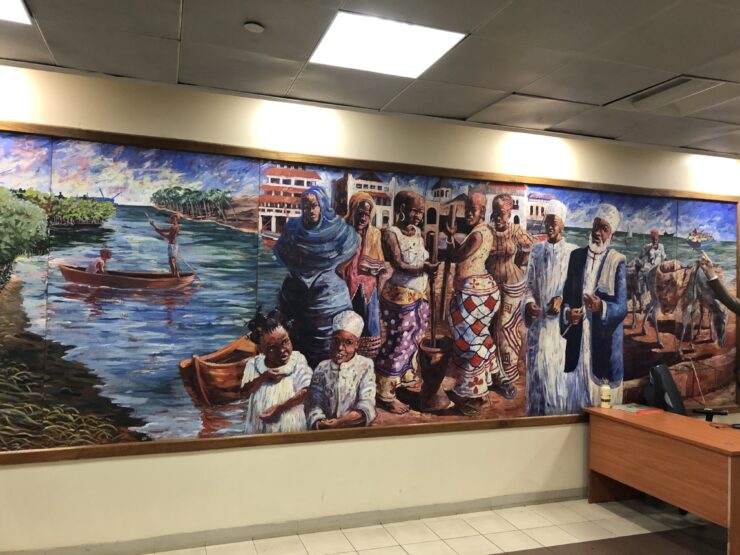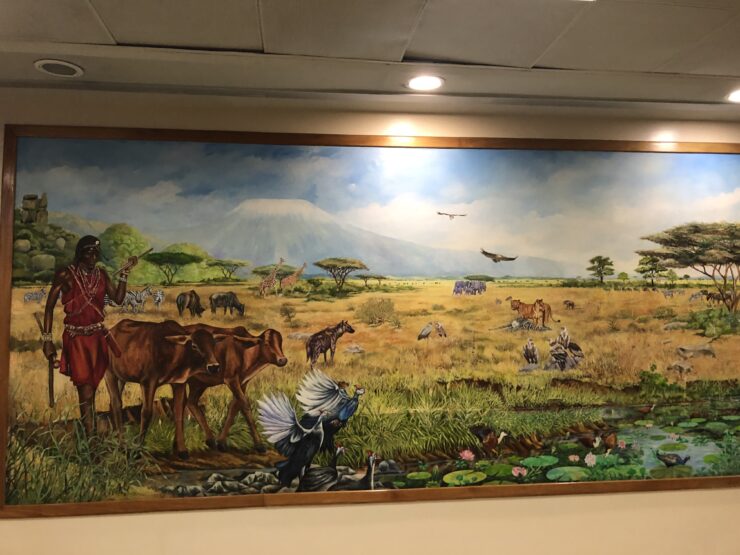“Karibu Magical Kenya”, or, welcome to magical Kenya! With this slogan of the Kenya Tourism Board, tourists arriving at Jomo Kenyatta International Airport in the Kenyan capital of Nairobi are welcomed. Here, visitors are also presented with large paintings that give them a glimpse of what awaits them once they leave the airport. The paintings show panoramas of beautiful nature and culture. The vast savannah surrounding Africa’s highest mountain, Mount Kilimanjaro. Magnificent animals such as lions, hyenas, zebras and giraffes. Tropical beaches and mangrove forests. It also portrays the Islamic Swahili culture from the coastal region of Kenya, where people supposedly get around with donkeys and simple boats. Finally, African cultures are also depicted, in the form of a Masai herdsman with his cows and women in traditional dress.

All of these things can indeed be found in Kenya. What is also striking, however, is what these paintings do not show. Cities like Nairobi and Mombasa, where a large share of Kenya’s population lives. Means of transportation such as the matatu, the SGR train recently constructed by China, and safari jeeps carrying international tourists that tear through Kenya’s wildlife parks in large numbers. Or the religion of the majority of Kenya’s population: Christianity. In my view, these panoramic paintings paint a picture of Africa in which it is untouched by interactions with the outside world, technological developments or historical events, such as, for example, the strong rise of Christianity during British colonial times. In other words, a visit to Kenya is presented as a journey into the past, into a world before modernity, full of unspoiled nature and authentic culture.
In a way, the slogan “Magical Kenya” also aligns with this frame. In European anthropology and religious studies, the term ‘magic’ has long been associated with irrationality. Based on this idea, the ‘magical’ practices of distant peoples were often seen as primitive, pre- or even anti-modern. In the past, the term has frequently been used to describe the customs and tradition(s) of Africans. In this way, European scholars distinguished between the ‘magic’ of Africans, which was seen as outdated and primitive, on the one hand, and the ‘religion’ of Europeans, or Christianity, which they saw as (more) civilized, rational and developed, on the other. According to religious studies scholar David Chidester, scientific theories about the supposed primitiveness of Africans were used to justify European colonialism and Christian missionary work. In a similar way, anthropologist Johannes Fabian criticized the work of earlier anthropologists in which they described ‘others’ and their culture as if they came from a distant past, rather than seeing them as coeval and equal.

The panoramic paintings and the slogan “Magical Kenya” in a sense build on old stereotypes about Africa, as they continue to present Kenya as a place where time has stood still. At the same time, they put a spin on these stereotypes by romanticizing the past. Indeed, the magic of African culture is no longer seen as something to be replaced through colonialism or evangelization, but rather as something unique that can be admired and appreciated by international tourists. This revaluation of African culture in the Kenyan tourism industry is noteworthy because many contemporary Kenyan Christians and Muslims continue to distance themselves from African traditions, which they see as outdated and primitive.
In my new project that is funded by the Dutch Research Council, I investigate how people from the Giriama ethnic group in the coastal region of Kenya defend their traditions against such criticism. They do this, for example, by presenting their traditions as valuable art or heritage to an audience of international tourists. The question is whether the slogan “Magical Kenya” contributes to the efforts of Giriama people to gain recognition for their traditions, which they want to practice in the here and now. Indeed, although the slogan allows for a reappreciation of African “culture and heritage”, these are often still presented as belonging to the past. In my project, therefore, I want to explore whether and how Giriama people can move away from old colonial frames in which African traditions are placed time and again – by colonial officials, missionaries, religious scholars, anthropologists and tourists – in the past.
This blog originally appeared in Dutch on https://urf.sites.uu.nl
All photos taken by Erik Meinema at Jomo Kenyatta International Airport in Nairobi


